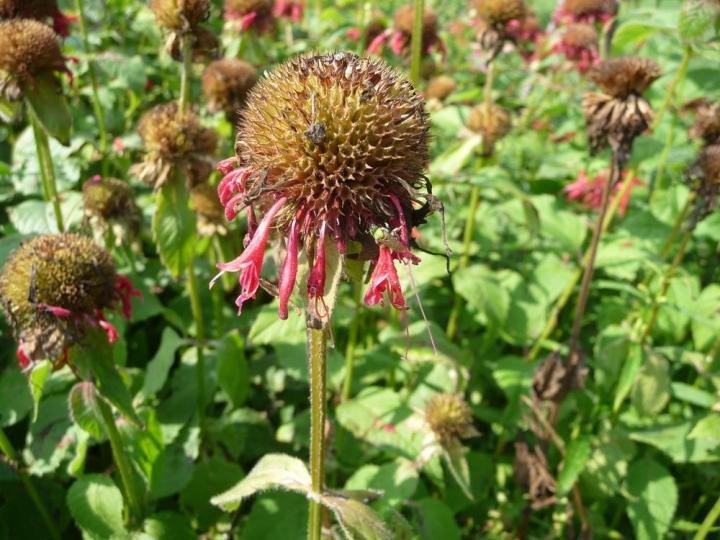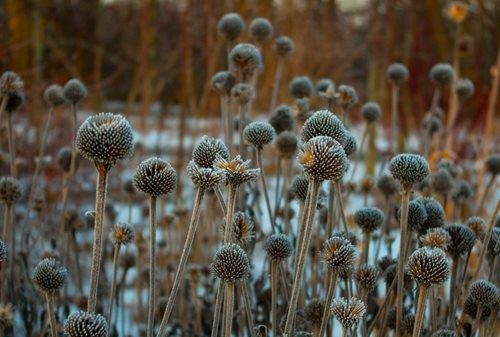Perennial Cutbacks
When to Cut Back Perennials
It’s obvious when it’s time to pull out annual flowers as they turn black and die after the firstfrost.
When it comes to perennials, don’t be in a rush to cut things down; hold off until after several hard frosts. Even if the flowers or leaves are dead, the roots are reclaiming energy from the dying plant for healthy growth in the spring.
Technically, very few plants MUST be cut down in the fall. We enjoy leaving as many flower seedheads standing as possible to add both winter interest as well as feed the birds in cold weather. If you follow nature’s lead, the decomposing leaves not only insulate the plant during the winter freezes and thaws but also decompose to provide excellent (and free) fertilizer, saving you time and money in the spring.
How to Cut Back Perennials
After several hard frosts, remove spent flowers and stems by cutting stems off near the base of the plant, allowing the crown (base of plant) to remain. Bypass pruners are preferred because they make a clean cut through the stem of the plant, whereas anvil pruners crush the stem, leaving more damage behind.
When to Cut Back Ornamental Grasses
Cut back your grasses in late winter ”February” or early Spring, in “March” or divide them in Fall or Early Spring. One way to do a cutbacks efficiently is to tie it up first.
Mulching
Mulches help control weeds, prevent disease, conserve moisture, maintain consistent soil temperatures, enrich the soil and make the garden look good.

![Perennial Cutbacks[64].jpg](https://images.squarespace-cdn.com/content/v1/64a3095ef53375509a534f4f/1707254871119-6X6TI9CBHD5W9C8X20JD/Perennial+Cutbacks%5B64%5D.jpg)













